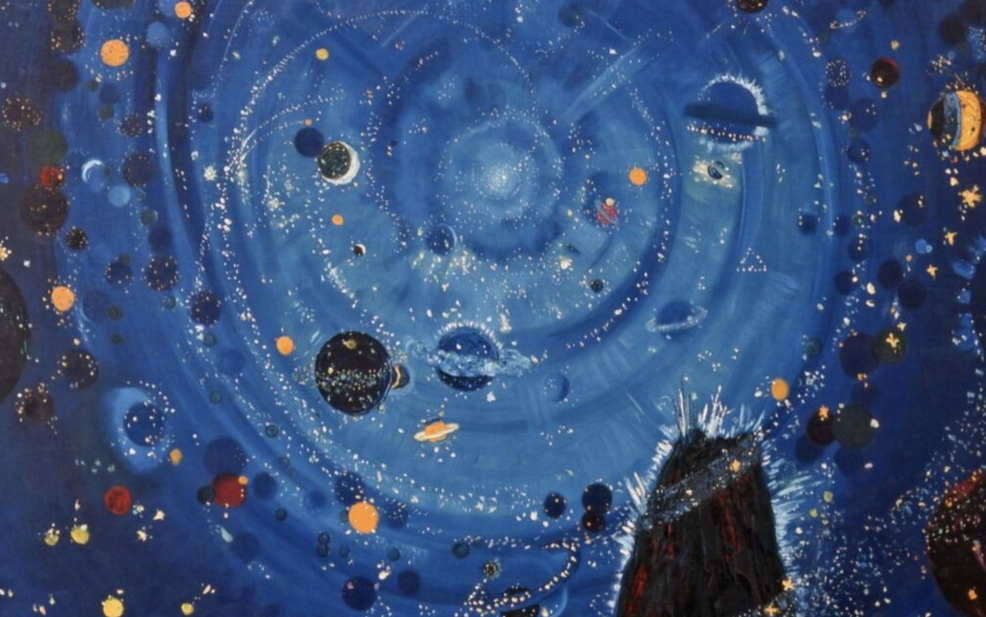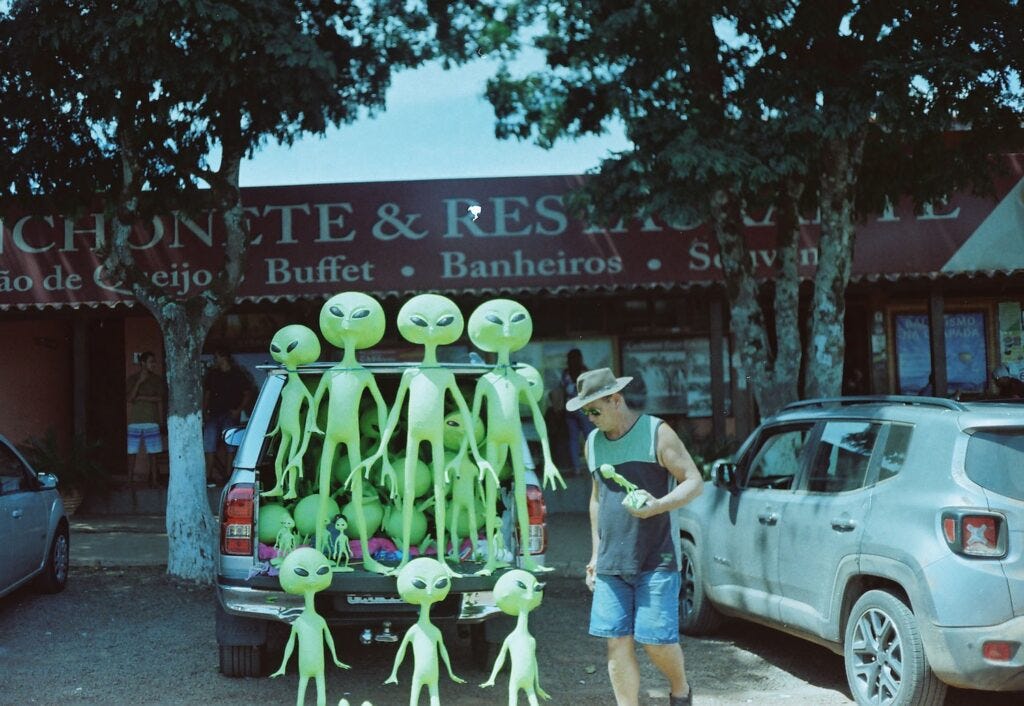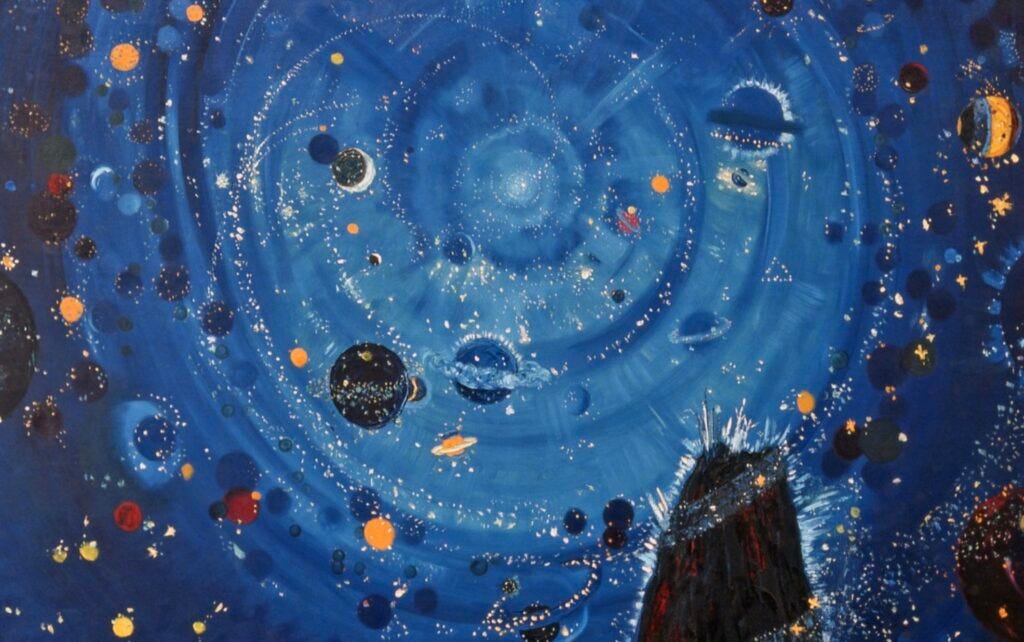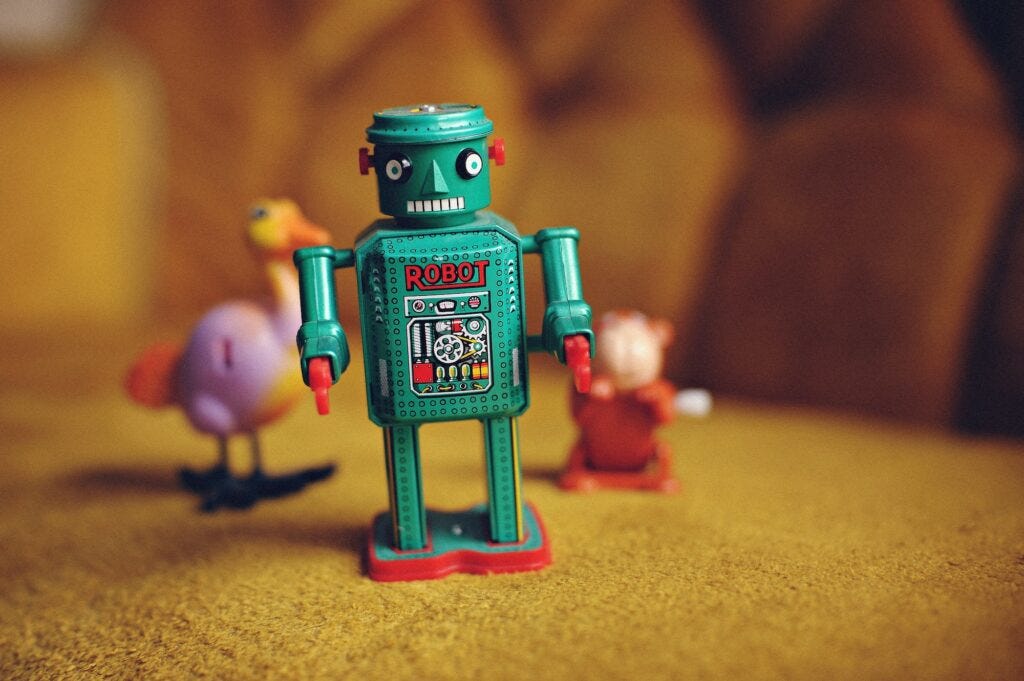Article first published on the Atlas of Wonders and Monsters Substack.
The end of 2021 is nigh; now is a good time to reflect back on the year. One of the things I did, from January to August, is hosting seven Interintellect salons — online discussions, in the form of a book club — about (almost) all of Ted Chiang’s short stories.
Most people who know me probably know Ted Chiang at this point, but in case you don’t: Chiang is an American writer, specializing in short science fiction. His style is clear, lucid, and usually optimistic. He’s been publishing stories since 1990, but very few of them: only 18 over 31 years. His most famous work is “Story of Your Life,” the basis for the movie Arrival.
Chiang’s slow publishing pace implies two things. First, he makes sure that his stories are real good. All are of excellent quality; several are masterpieces and have won prizes. Second, you can literally read his entire body of work in a short time. Except for the most recent material, it’s all included within two books: Stories of Your Life and Others and Exhalation: Stories.
The fact that you can know an author’s work fully, especially one as great as Ted Chiang, is attractive. So it felt fitting to discuss the entirety of his oeuvre over seven salons. Each session covered two to three stories, arranged by theme. The themes were:
- Science fiction from an imaginary past
- God as scientific fact
- Worlds and beings very foreign to us
- The problem of free will
- Tweaks to the human mind
- Vastly superior brains
- The artificial other
Here are some notes and thoughts from each. They’re not totally spoiler-free, but they’re not spoiler-heavy either. In any case, spoilers don’t really matter for Ted Chiang’s stories. Their value almost never comes from surprising twists and endings, and most are perhaps even more enjoyable on a second read.
I. Science Fiction from an Imaginary Past
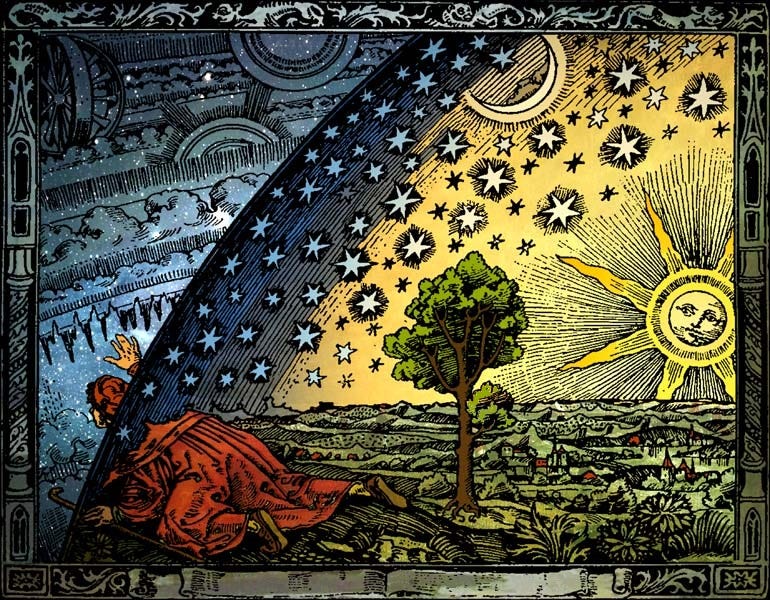
I call “science fiction from an imaginary past” a specific and uncommon subgenre of science fiction: stories that are set in the future as seen from a point in the past. In other words, how could people hundreds or thousands of years ago have imagined their future? What technologies could they have foreseen, using their (now obsolete) scientific theories?
Two Chiang stories fit squarely into this subgenre: “Tower of Babylon” and “Seventy-Two Letters.”
“Tower of Babylon” is set in ancient Mesopotamia. It assumes the cosmological models of the ancient Hebrews is correct: the Earth is flat, the sun and moon are small planets following a set course, and above everything is a vault of granite, which the people call “heaven.” Above heaven is a vast quantity of water.
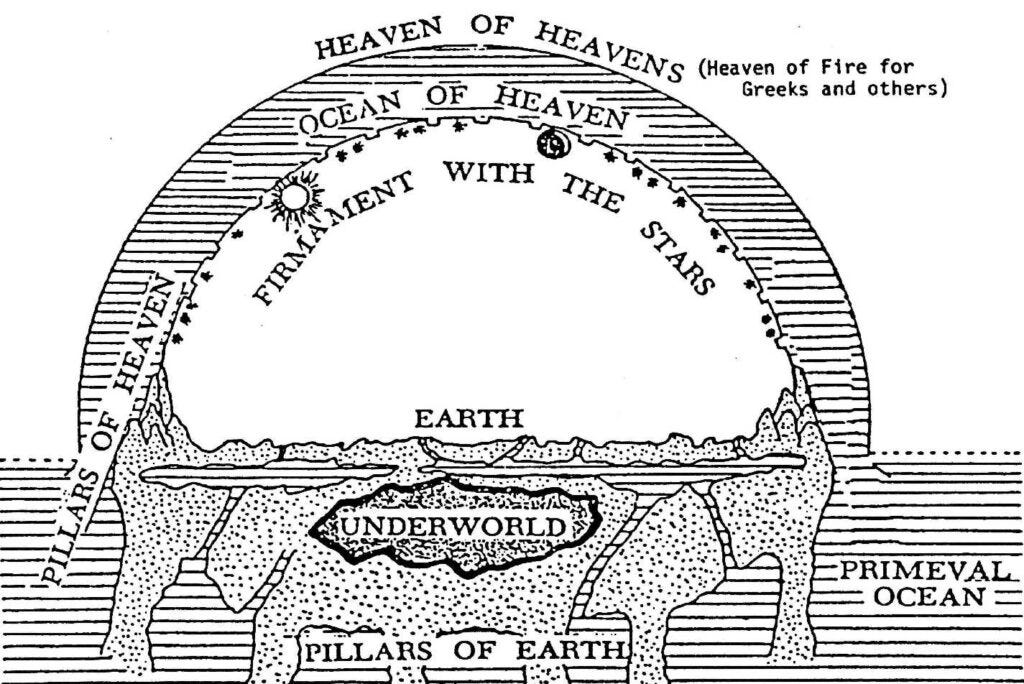
The plot follows a crew of miners who climb a gigantic tower to reach the vault of heaven and dig through it. As I wrote in a post last February, this can be read as a metaphor for space travel:
Climbing it takes months; so would a trip to Mars. People live in the tower, adapting to life in unusual conditions, never going back to the surface, just like people in a starship leaving the solar system. The tower goes higher than the moon and sun (this is, after all, ancient Hebrew cosmology). And the miners eventually reach the vault, which is a very alien place — much like a foreign planet.”
“Seventy-Two Letters,” meanwhile, is set in Victorian England. It revives the obsolete theory of preformationism, which says that the progeny of living organisms already exists — in tiny form — within the gametes of adults. This implies that all future generations are nested within each other, in a limited number. The finiteness of species is a major concern for the characters in the story. They’ll try to solve the problem of impending human extinction by using another principle that isn’t true outside of the story: that formulas made of Hebrew letters can animate objects, like in the Jewish golem myth.
One question that we discussed during the salon was: Are these stories science fiction or fantasy?
It’s not immediately obvious. Clearly, the universe of “Tower of Babylon” looks like a fantasy to us moderns. We know very well that the shape of the real world is not like the story’s fanciful depiction. Yet it still feels like science fiction because the presented cosmological model is accepted as natural — which means there’s nothing supernatural in the story. The characters rely on engineering and physics, not magic and theology.
The Hebrew formulas of “Seventy-Two Letters,” which are used to animate golems and inject the vital principle into embryos, feel more fantastical. It’s not explained why they work. But they do, and scientists study them as part of the natural world. In truth, they’re a metaphor of information in the real world: DNA and computer code are just data, but data that can influence the shape and behavior of physical objects.
In a 2010 interview, Chiang defined the difference between science fiction and fantasy, or equivalently between science and magic, like this:
In a story where only a handful of characters are able to turn lead into gold, there’s the implication that there’s something special about those individuals. The laws of the universe take into account some special property that only certain individuals have.
By contrast, if you have a story in which turning lead into gold is an industrial process, something that can be done on a mass scale and can be done cheaply, then you’re implying that the laws of the universe apply equally to everybody; they work the same even for machines in unmanned factories. In one case I’d say the phenomenon is magic, while in the other I’d say it’s science.”
The boundary between science and magic can be blurry. You could posit a fantasy world in which the characters use scientific thinking to exploit the supernatural elements. I’m thinking, for example, of Harry Potter and the Methods of Rationality, which differs from the original Harry Potter series due to a scientific-minded main character who seeks to understand the coherent principles underlying the magic. But I would still call this fantasy (maybe rationalist fantasy).
A proper definition of “science fiction from an imaginary past” needs another element: the worldview in the story must have been considered true in the past. Our distant ancestors really did think that heaven was a vault covering the world. Our more recent ones really did believe that tiny preformed organisms existed within the spermatozoa — an idea that makes no sense today but seems plausible when you don’t know about genetics.
In other words, it is science fiction that could have been written by the ancient Hebrews or the Victorian British. As far as I know, this subgenre is quite rare. I’ve had a hard time thinking of other examples.
In any case, science is still marching forward. Surely a lot of our current science fiction will one day feel like those two stories, if it relies on theories that we currently think are true, but which will reveal themselves to be false.
II. God as Scientific Fact
The second salon was similar in its outlook to the first. We discussed stories that rely on a specific worldview being true — but in this case a religious rather than a scientific one.
What if angels, heaven and hell, and miracles were normal occurrences? This is the premise of “Hell is the Absence of God,” one of Ted Chiang’s best stories. It is told in a very effective matter-of-fact tone. Angel visitations happen at random, injuring and killing some nearby people, but also granting miraculous healing to others. Statistics are compiled. Material damage is estimated. Some lucky people get struck with divine light and spend the rest of their life glorifying God until their soul rises towards heaven. But most people, after their death, end up in hell — which is a world just like Earth, but without any intervention from God.
The other story we read was “Omphalos,” which assumes Young Earth Creationism is true. The world was created 9,000 years ago, and there is scientific evidence to prove it. Mummies and trees from the time of creation have no bellybuttons or growth rings, since they were created ex nihilo. In this world, being a scientist is a highly religious affair, since it means uncovering more of the divine plan.
Again these two stories are recognizably science fiction. Sure, God and angels and the creation of the world are supernatural; but once you accept that they exist, they can be studied scientifically.
Is there a difference between an obsolete scientific worldview (as in the previous section) and a disproved or metaphorical religious tenet? Yes, but perhaps not a strong one. I’m reminded of an essay by Eliezer Yudkowsky about religion:
Not only did religion used to make claims about factual and scientific matters, religion used to make claims about everything.”
Yudkowsky enumerates: codes of law, history, sexual morals, forms of government, and “scientific questions from biological taxonomy to the formation of stars.” All of these used to be part of a religious worldview, until they were “taken over by better institutions.” The modern concept of religion is mostly a set of moral principles, not because ethics is inherently more “religious,” but because it’s the one thing that proved hard to replace with something else.
In fact, you could argue that “Tower of Babylon” and “Seventy-Two Letters” fit this theme more than the first. The ancient Hebrew conception of heaven was part of ancient Hebrew “religion,” which describes the entire worldview of the ancient Hebrews. The Hebrew formulas in “Seventy-Two Letters” are clearly “religious” in origin, too.
(The fact that that paragraph contain the word “Hebrew” four times is also a strong sign that Chiang is exploring the Judeo-Christian roots of basically everything in the Western world.)
Science fiction implies some sort of fictional technology or concept. Usually this comes from extrapolating the present to imagine the future, but Ted Chiang is a master at extrapolating both the past and what we might call the parallel — world views that are no longer thought of as scientific.
III. Worlds and Beings Very Foreign to Us
The third salon explored a totally different theme: aliens.
Unlike the classical Little Green Men as in the image above, The aliens in Chiang’s work are not like the classic Little Green Men as in the image above. Instead, they are deeply unfamiliar. In “Story of Your Life,” they are called heptapods and their most distinctive feature is their linguistics. Heptapod A is their spoken language, and isn’t too different from human languages; but Heptapod B, their written language, is (to paraphrase one of the characters) “highly weird.” Heptapod B is absolutely not linear. Text written in it appears as a highly intricate mosaic of lines that has to be taken all at once — what we would call a “long” text is, to them, a more complete figure. This non-linearity, deriving from the radial symmetry of the heptapods, has a lot of implications on their conception of time and free will.
“Story of Your Life” is Ted Chiang’s masterpiece. It’s really, really good. If you’ve only seen the movie, it’s worth reading the story too.

The second alien story was “Exhalation,” and the beings in it are no more familiar. They are mechanical, are made of metal, and their energy source is pressurized air. The main plot point is the slowdown of everyone’s bodily functions, due to the diminishing pressure of the underground lung of the world — an analogy to the second law of thermodynamics and the ever-increasing entropy towards the eventual heat death of our universe.
We also discussed one of Chiang’s shortest stories, “The Great Silence,” about Puerto Rican parrots. They’re not aliens, yet the theme of communication between very different species is relevant. By transmitting a message from the Arecibo radiotelescope, humans hope to establish contact with extraterrestrial beings; but how can we hope to do this when we can’t even communicate with parrots?
These stories ask enticing questions. In most science fiction (for example, Star Wars), aliens are somewhat humanoid, or animal-like. They’re recognizable. This is because stories are written to be enjoyable to humans; truly exotic, bizarre life forms would be difficult to empathize with. But if aliens do exist, there’s no particular reason to think they would look like terrestrial life as we know it.
It wouldn’t even be a given that we’d recognize them as alive. Would we see the mechanical beings of “Exhalation,” with their brains made of fluttering gold flakes, as living things or mere robots?
Are robots alive? What about AI? Suppose aliens visited Mars but not the Earth, and found only our Mars rovers; would they assume they found life?
What about even more exotic beings? Another science fiction writer, Ken Liu, who was directly influenced by Chiang, wrote two stories that describe wildly foreign aliens: “The Bookmaking Habits of Select Species” and “An Advanced Reader’s Picture Book of Comparative Cognition.” Some are hourglass-shaped copper beings who get their energy from steeping in lava. Others are uranium-based life forms whose cognition is indistinguishable from nuclear chain reactions, or thin wisps of energy across the vast distances of outer space.
Think long enough about aliens, and you eventually just start questioning what “life” even means. At the level of physics, living beings are negative entropy machines, using energy to create order.
But this doesn’t make very good stories. So even Chiang’s alien fiction is about aliens that we can easily analogize to humans. There’s no real way around it.
IV. The Problem of Free Will
“Story of Your Life” is about aliens, but it’s also about free will. This theme comes up often in Ted Chiang’s work. Our fourth salon discussed it in the context of three other stories: “What’s Expected of Us,” “The Merchant and the Alchemist’s Gate,” and “Anxiety Is the Dizziness of Freedom.”
“What’s Expected of Us” is extremely short, just three pages, and posits a machine that works with a “negative time delay.” It has a button and a light. The light flashes if and only if you are going to press the button one second later. There is no way to fool the machine.
This proves that free will doesn’t exist, since your actions are demonstrably deterministic. In the story, this turns out to be disastrous: a third of the people who play with the machine end up catatonic, with no motivation to do anything, including feeding themselves. The narrator warns:
Pretend that you have free will. It’s essential that you behave as if your decisions matter, even though you know you don’t. . . . Civilization now depends on self-deception. Perhaps it always was.
Fortunately, the next story, “The Merchant and the Alchemist’s Gate,” expresses the same point in more optimistic terms. It is a time story set during the Islamic golden age. Instead of a “time machine,” the characters travel through a gate that links the present with both the past and the future at a distance of 20 years. The plot lines involve trying to change the past but finding that you can’t. Indeed, time travel should be possible only if there is no free will; otherwise, if people can escape determinisim and change the past, we get inconsistencies and time travel can’t happen.In keeping with the Muslim theme, the message of the story is one of acceptance.
“Anxiety Is the Dizziness of Freedom” explores similar ideas from the point of view of the quantum many-world interpretation — which states that the world constantly “branches out” into parallel timelines whenever a quantum event occurs. Over time, the multiple versions of you will behave differently; but if, say, 90% of them behave in the same way, this says a lot on who you “truly” are and how deterministic the world is.
My own take on free will is basically taken from Less Wrong: that it is a badly formed concept, an illusory word to describe something that feels right. We are probably in a deterministic universe, but the determinism includes you and your decision processes. You don’t exist outside of time, and so your actions absolutely have an impact even if they are “determined.”
But of course, free will is a perennial “deep philosophical question” — just take a look at the Wikipedia page about it — and we had a great discussion about it in the salon.
Looking at my notes, it seems that I wrote down that Russians believe people from different countries have differently-sized souls. I have no idea what that means.
V. Tweaks to the Human Mind

In the fifth and sixth salons, we discussed the augmentation of human cognitive capabilities. The first of the two events was about the relatively lighter tweaks: turning off our ability to see human beauty in “Liking What You See: A Documentary,” and replacing our organic memory with an artificial one in “The Truth of Fact, the Truth of Feeling.“
The issues in the first story are around equality. Lookism — discrimination based on how attractive people are — is widespread, so it might be tempting to take our perception of human beauty out of the equation altogether. But in doing so, do we lose something? Is it good to remove a way to experience life in order to achieve some desirable social goal?
In the second story, Chiang explores the idea of using technology to improve a pretty fundamental part of our minds: memory. In this future, people already film their life constantly; and now a company has developed a search algorithm that can bring to mind images from that life log so well that it can replace the natural act of remembering. The narrator, like, presumably, most of us readers, doesn’t like it. But he (and we) can’t shake the feeling that this view is wrong, when you consider that we’ve been supplementing memory with technology for millennia. What is writing, if not a technological aid to our brains?
VI. Vastly Superior Brains
And then there’s the big stuff: directly improving intelligence.
This salon touched on three stories. “It’s 2059, and the Rich Kids Are Still Winning“ is Chiang’s most recent, from 2019 — a fake editorial about genetic cognitive enhancement and why it is unlikely to solve issues of wealth inequality. Then, in “Understand,” we witness cognitive inequality in a spectacular way. The protagonist’s intelligence has exploded thanks to an experimental drug, and we get to witness the expansion of his mind and the influence he is able to gain on others. It is scary, much like any talk of superintelligence tends to be.
(This is not one of the more uplifting Chiang stories.)
Finally, “The Evolution of Human Science” assumes that a whole race of superintelligent beings, called “metahumans,” has been created, not quite due to direct enhancement but rather to extremely fast communication between people, which in a way is just another kind of superintelligence. Now the inequality is between them and the normal humans, who can’t keep up. All new scientific progress comes from the metahumans, and human “science” simply involves interpretation of the difficult-to-understand metahuman texts.
The stories from this salon and the last drive home an interesting point about Chiang and science fiction. The outlook in them is not usually negative. There are issues, yes — with social equality, fear of change, and so on — but overall technological progress in human enhancement is described as a good thing. Lookism is less of a problem. Memory is becoming more reliable. The metahumans are advancing science. Even the scary superintelligent man in “Understand” is defeated in the end, by someone more ethical than he is.
These stories are techno-optimist. Which is unfortunately not that common in current science fiction! Yes, changing human biology and psychology can go horribly wrong, but it can also go extremely well. Transhumanism — going far beyond our current capabilities as humans — is scary, but also necessary to solve our many problems. It has to be done right, which is why we have stories about its failings, but it also has to simply be done, which is why we need stories that describe enhancements in a neutral of favorable light.
VII. The Artificial Other
And lastly, the seventh salon discussed artificial intelligence — but mostly in the context of human-robot relationships.
In “The Lifecycle of Software Objects,” a novella and Chiang’s longest story, cute digital beings are created by a software company to inhabit a virtual world. The main characters get attached to them and raise them in a way that is very analogous to kids, raising questions on our possible relationships with artificial minds.
(One of which is: are they a substitute to kids? Are kids the “real thing”?)
(Another: how should we think about sex when it comes to robots designed to be cute pets, but who eventually reach the maturity of a teenager?)
In “Dacey’s Patent Automatic Nanny,” the situation is reversed: it is the machine that raises a human kid. The automatic nanny is an imaginary invention from the late Victorian Era, steeped into the mores of the time, and allowing us to think of the consequences of being reared by a robot. It doesn’t go very well.
These stories are relevant in an age where we delegate our work more and more to machines, including mental and service work. In South Korea, there is a whole industry called “untact” whose goal is to reduce interactions with real people in the services industry to a minimum. Online, we interact with bots on a daily basis. It will be even more true in the metaverse. It seems like a good idea, then, to spend some time thinking about our emotional connection with machines.
I once played The Sims and definitely felt something that was close to infatuation. It felt strange to have fallen in love with virtual people that I had created, but it was not unpleasant. And then I realized that we fall in love with fictional characters — from movies, books, games — all the time! There’s absolutely nothing in the human psyche that prevents that from happening. It never lasts, because you can’t develop a long-term relationship with a movie character. But what if you could? How would the world adapt?
Hosting these seven salons was a highlight of my year. Ted Chiang is definitely up there in my top five favorite writers, and the breadth of the ideas he plays with is just incredible, as this post probably makes very clear. It was also a lot of fun to discuss with the small crew of regulars to the book club each month.
Chiang is great for several reasons. But whenever I tell people to read him, I emphasize one quality over the others: his (uneasy and non-naïve) optimism.
This is important. A lot of science fiction is dystopian, partly because unfamiliar ideas about the future tend to be disturbing, and partly because catastrophic scenarios make for more engaging plots. I have nothing against dystopia — but it’s not great if futuristic ideas are more often than not discussed this way. It’s not good for morale. It’s not encouraging us to build a better tomorrow. It can easily turn someone into a techno-pessimist.
Techno-pessimism, which to be fair is an understandable attitude, is, I think, a bad force, perhaps one of the greatest evils on earth. It could deprive us of a bright future — which would be an ethical disaster. So I’m glad that Ted Chiang is out there, producing bright, fun, uplifting science fiction. Even at his slow rate, if it prompts others to write their own positive stories, and causes a chain reaction of people who build new technologies in ways that can truly improve our lives, then it makes sense to be (uneasily, perhaps, and non-naïvely) optimistic.

